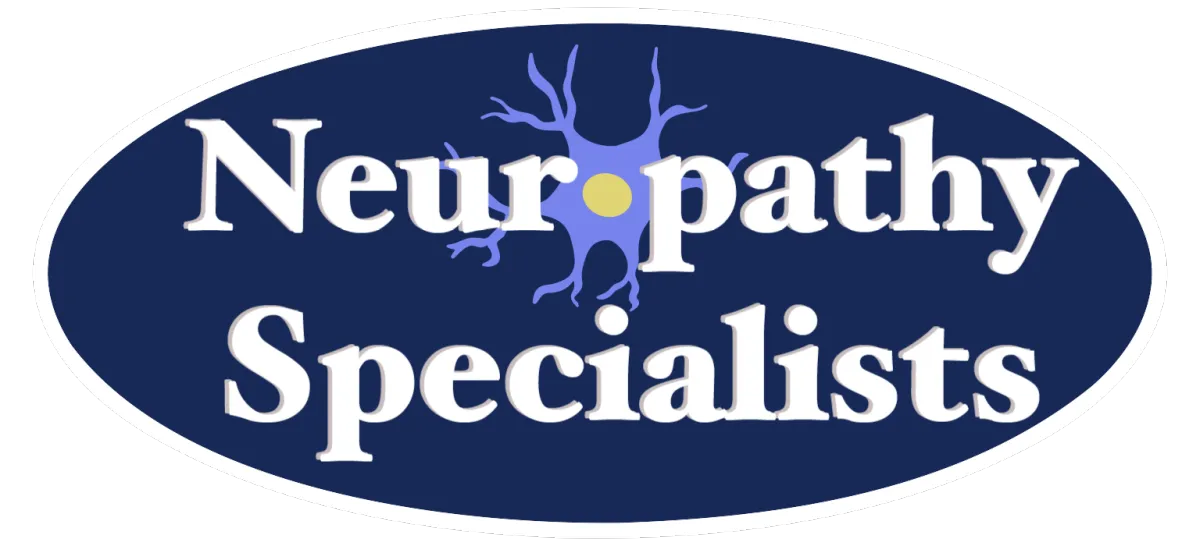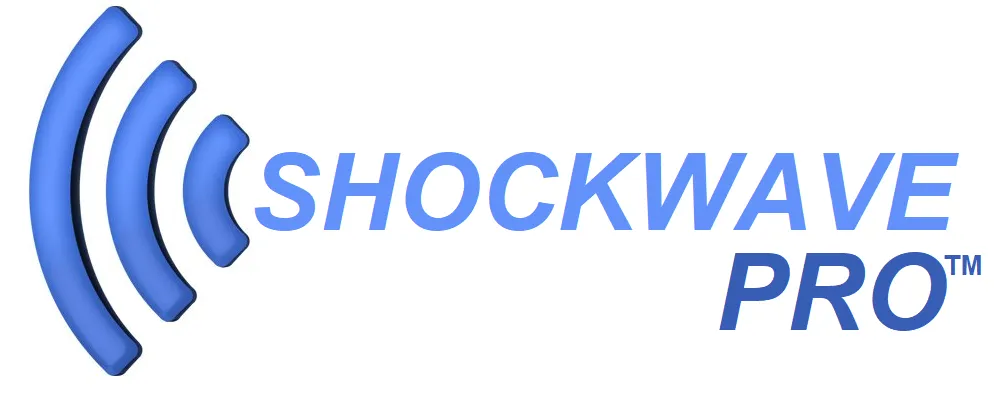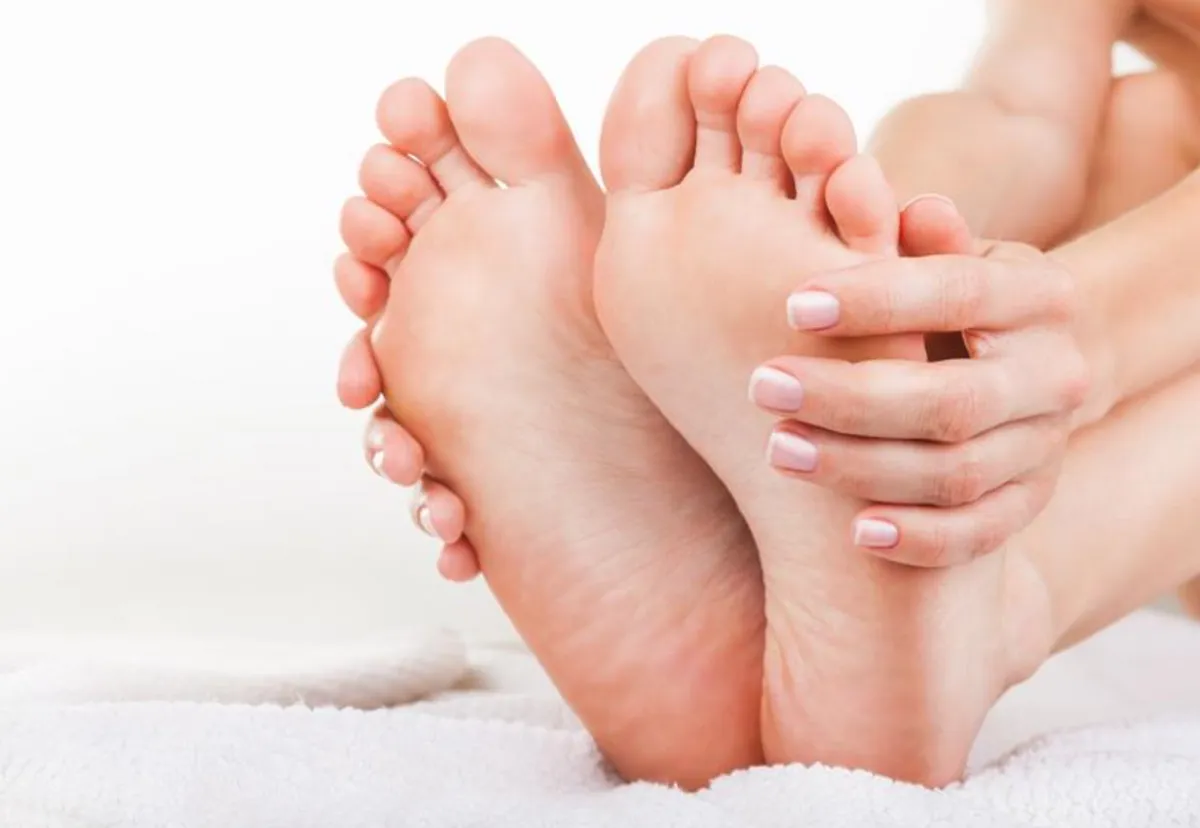
How to Diagnose Compression Neuropathy vs. Peripheral Neuropathy
How to Diagnose Compression Neuropathy vs. Peripheral Neuropathy
By: Neuropathy Specialists
Date: 06-01-2024
Introduction:
Neuropathy refers to damage or dysfunction of one or more nerves, typically causing numbness, tingling, muscle weakness, and pain in the affected area. Two common types of neuropathy are compression neuropathy and peripheral neuropathy. Understanding how to diagnose these conditions is crucial for effective treatment and management.
Understanding the Differences
Compression Neuropathy:
Cause: Results from pressure on a nerve, often in localized areas. Common examples include carpal tunnel syndrome (median nerve compression) and cubital tunnel syndrome (ulnar nerve compression).
Symptoms: Typically includes pain, numbness, tingling, and weakness in the distribution area of the compressed nerve. Symptoms are often localized and may worsen with certain activities or positions that exacerbate the compression.
Peripheral Neuropathy:
Cause: Often results from systemic issues such as diabetes, vitamin deficiencies, infections, autoimmune diseases, or toxins. It affects nerves throughout the body.
Symptoms: Generally more diffuse, affecting multiple areas. Symptoms can include widespread pain, numbness, tingling, and weakness. It can affect sensory, motor, and autonomic nerves.
Diagnostic Approaches
1. Patient History and Physical Examination
Compression Neuropathy:
History: Inquire about activities, occupations, or positions that may lead to nerve compression (e.g., repetitive hand movements, prolonged elbow flexion).
Physical Exam: Look for specific signs like Tinel’s sign (tapping over the nerve to elicit tingling) or Phalen’s maneuver (flexing the wrist to reproduce symptoms) for carpal tunnel syndrome.
Peripheral Neuropathy:
History: Investigate systemic conditions (e.g., diabetes, alcohol use, exposure to toxins), medications, and family history of neuropathy.
Physical Exam: Assess for widespread symptoms, such as loss of sensation in a glove-and-stocking distribution, muscle weakness, and autonomic dysfunction (e.g., blood pressure changes, digestive issues).
2. Nerve Conduction Studies (NCS) and Electromyography (EMG)
Compression Neuropathy:
NCS/EMG: These tests measure the speed and strength of electrical signals in the nerves. In compression neuropathy, NCS may show slowed conduction velocity or block at the site of compression. EMG can reveal denervation in muscles innervated by the compressed nerve.
Peripheral Neuropathy:
NCS/EMG: These tests help identify the type and extent of nerve damage. Findings may include diffuse slowing of conduction velocity, reduced amplitude of signals, and widespread denervation, indicating a systemic rather than localized issue.
3. Imaging Studies
Compression Neuropathy:
MRI/Ultrasound: Imaging can visualize the site of nerve compression. For example, an MRI can show structural issues like herniated discs, thickened ligaments, or masses causing nerve compression.
Peripheral Neuropathy:
MRI/Ultrasound: Less commonly used for diagnosis unless specific nerve damage is suspected. Imaging may be used to rule out other causes if the diagnosis is unclear.
4. Laboratory Tests
Peripheral Neuropathy:
Blood tests can help identify underlying systemic conditions causing neuropathy, such as blood glucose levels for diabetes, vitamin B12 levels, thyroid function tests, and tests for autoimmune markers.
5. Nerve Biopsy
Peripheral Neuropathy:
In rare cases, a nerve biopsy may be performed to determine the exact nature of the nerve damage, particularly if an inflammatory or infiltrative process is suspected.
Treatment and Management
Compression Neuropathy:
Treatment often involves relieving the pressure on the nerve. This can include physical therapy, splinting, ergonomic adjustments, corticosteroid injections, or surgery.
Peripheral Neuropathy:
Management focuses on treating the underlying cause (e.g., controlling blood sugar in diabetes), symptom relief (e.g., pain medications, anticonvulsants), and lifestyle modifications (e.g., dietary changes, avoiding toxins).
Conclusion
Accurate diagnosis of compression neuropathy versus peripheral neuropathy is essential for effective treatment. By carefully evaluating patient history, conducting thorough physical examinations, and utilizing appropriate diagnostic tests, healthcare providers can distinguish between these conditions and tailor treatment strategies to address the specific type of neuropathy, ultimately improving patient outcomes.
HOW OUR TREATMENT PROCESS WORKS

We have been treating Neuropathy of the feet and hands since 1999.
At Neuropathy Specialists, all we do is Neuropathy, and we do it well. Our clinic was founded on treating Neuropathy from multiple causes. Treating patients in our clinics using simple yet advanced therapies gave us the idea of sending these therapies home with our patients. If it was successful in the clinic, it would be successful anywhere, even in the comfort of the patients own home. And It was. Now we are dedicated to getting relief to as many patients as possible.
HOW OUR TREATMENT WORKS
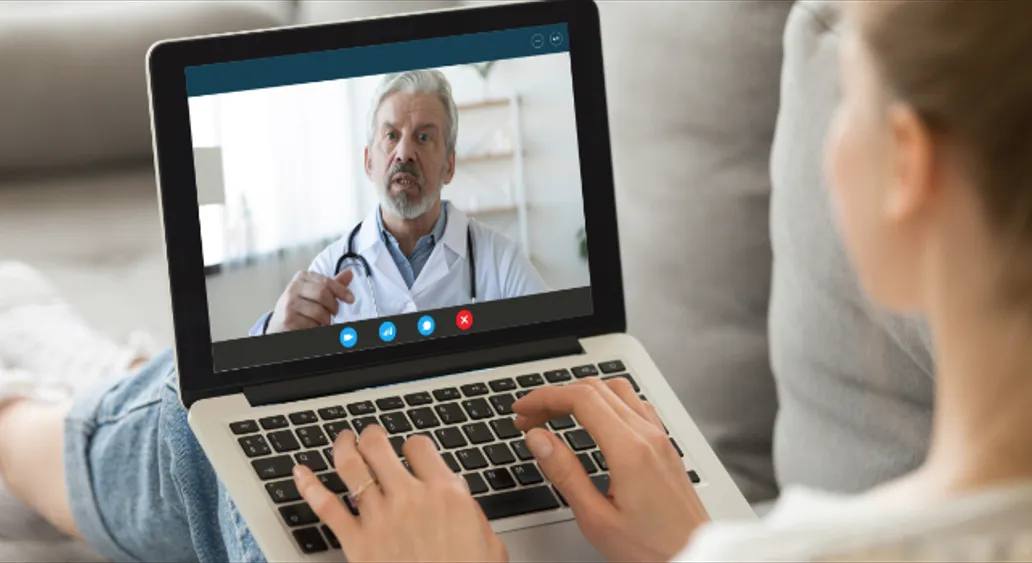
VIRTUAL CONSULTATION
All of our patients will undergo a comprehensive virtual consultation to ensure they are a candidate for our at home neuropathy treatment. After your consultation your at home neuropathy kit will be shipped directly to you. You will be guided through the use of the easy at home kit via video tutorials or live virtual support.

KIT ARRIVAL & SET UP
Once the kit has arrived and you have been instructed on its use, you can begin treatment! The treatment is easy, painless, no medications, no adverse side effects. Treatments are performed daily for a period of two weeks. At that time you will meet virtually with one of our providers to evaluate your progress.

START YOUR TREATMENT
Our at home treatment consists of water immersion electrotherapy and photobiomodulation therapy that are safe, FDA Approved, and have over an 85% success rate. Our at home treatment kit also comes with an at home rehab program to help increase circulation and restore lymphatic flow to the feet and lower leg. This advanced combination therapy has helped 1000's to get rid of neuropathy pain and get their life back!

TRACKING YOUR PROGRESS
Our specialized team of healthcare providers will be with you every step along the way. Our team is available 24/7 to help you with questions, set up, treatment performance, and to help track your progress.
George from West Virginia

I had progressive diabetic neuropathy in my feet and it had worked it's way all the way up my calves. After two weeks of using this treatment at home I started to regain the feeling in my legs and feet. It has improved my balance and given me hope for the future! My feet had been numb for two years and my doctors told me that there was nothing that could be done. Thank you!
Jessica from Colorado

I was diagnosed with peripheral neuropathy and it felt like I had a rolled up sock under my toes. It eventually progressed to burning pain constantly in my toes and the balls of my feet. The only option I was given was medication. It helped with the pain but not with the numbness, and it didn't stop it. The burning pain and tingling eventually took over the entire bottom of my feet. After two weeks of the at home treatment the burning pain was gone completely and I was able to get off my medication completely!
FAQS
How does this treatment work?
Our treatment program uses a combination of the 3 most studied and successful treatments available. These therapies have been shown to be the most successful with Diabetic Neuropathy, Peripheral Neuropathy, and Chemotherapy Induced Peripheral Neuropathy. We have seen truly amazing results in many different types of neuropathy patients. Our passion is helping those with neuropathy using the latest and most effective treatments, all from the comfort of your own home, and we want it to be affordable.
First we use water immersion electrotherapy and neuronal stimulation to get your damaged nerves to fire again. Using water immersion ensures that every neuron and nerve in the foot and lower leg are activated. Patients with severe neuropathy symptoms may feel little to no sensation for the first few treatments, but gradually sensation will return as the damaged nerves begin to rebridge and repair. Most patients will feel the tingling and electrical impulses immediately. By the second week of daily treatments 85% of patients report seeing significant improvement in their neuropathy symptoms.
Second the feet and lower leg are wrapped in a power Photobiomodulation unit which delivers multiple wavelengths of healing infrared light and this stimulates mitochondria activation in your cells. Mitochondria are your cells power plants, they produce energy to help your cells conduct vital activities such as repair. These wavelengths also stimulate your nerves regrow and repair damage neuronal connections, and to regrow the microvasculature and blood vessels that feed your nerves and tissues.
Third, Alpha Lipoic Acid is used which helps to repair the myelin sheath surrounding the nerves and increases nerve conductivity. Some research studies have suggested that Alpha Lipoic Acid be used in place of other common prescription medications for relief of neuropathy pain.
The combination of these three therapies together is what produces the long term healing effects that we have seen with 1000's of our patients. Our goal is to heal the damaged nerves and restore vital circulation.
All guided by our live virtual tele-health consultations with our Neuropathy Experts. Our support team is here to help 24/7 with technical questions or anything you need.
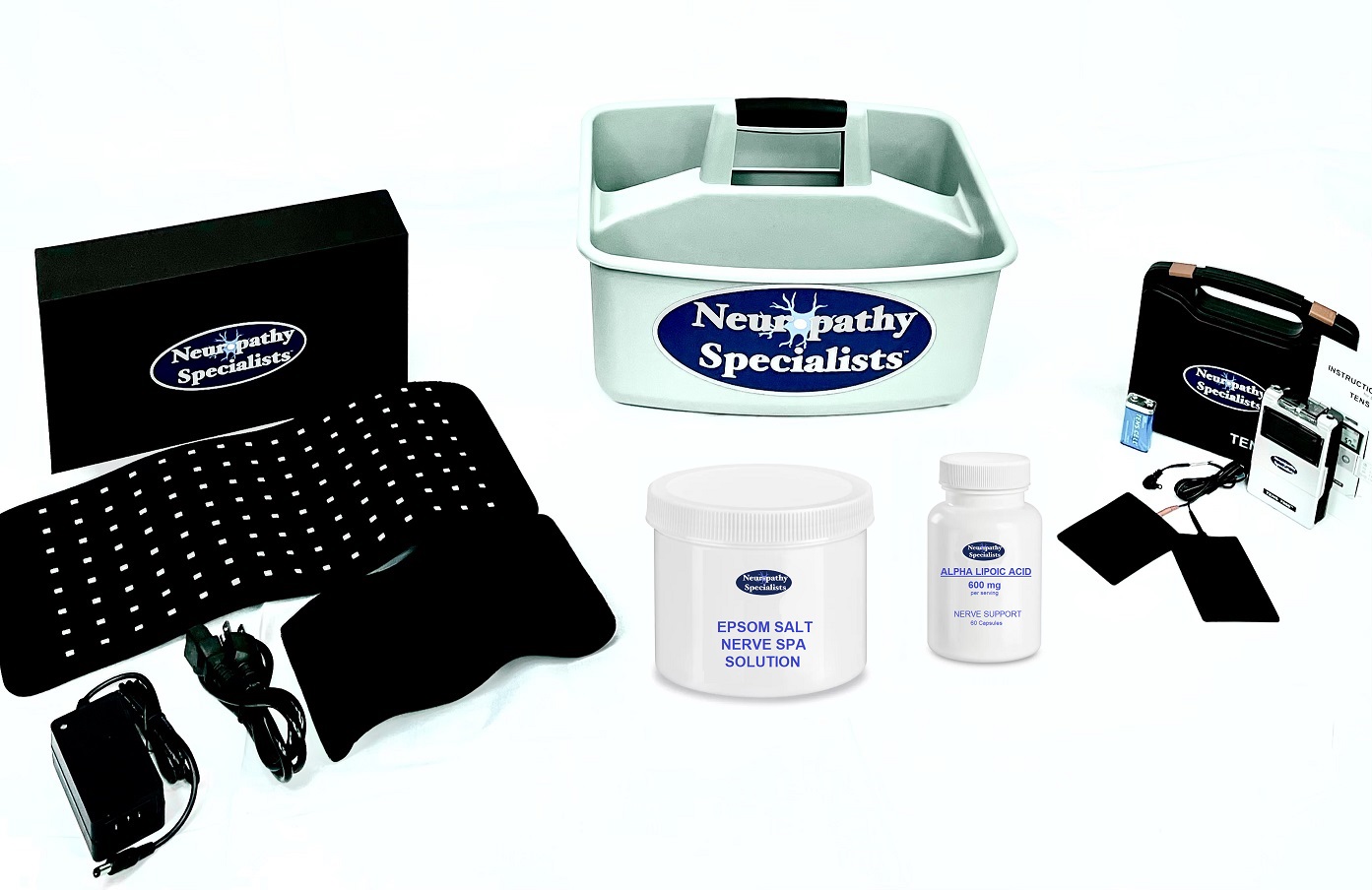
Beware of Common Neuropathy Scams!
In the world of neuropathy scammers are everywhere. We have built our business and our reputation on providing real relief to our patients at affordable prices.
Similar treatment programs to ours can be found in many neuropathy clinics across the United States. However, these clinics charge anywhere from $2,500 to $5,000 for the exact same treatments we provide. The equipment is the same, and yes those patients will see results as well, but the inflated cost is taking huge advantage of those patients that are in pain and looking for relief.
Many people on social media will tout Alpha Lipoic Acid as "all" you need to "cure" neuropathy. We too wish it were that easy, and yes Alpha Lipoic Acid can help drastically but it alone can not cure neuropathy. Most of these social media doctors are actually selling their own brand of ALA, and will make wild claims as to its effectiveness. ALA is crucial to our treatment program, but it is not the only tool in the tool box.
Beware the clinics and doctors selling the "Rebuilder", The Rebuilder is a brand of electrotherapy device that is insanely expensive and does nothing more magical than any other electrotherapy device. In fact it is the exact same technology we use in our electrotherapy device. Many clinics charge an average of $5,000.00 for their "neuropathy program" with the rebuilder as the star of the show. Our electrotherapy device costs us about $50.00, and our entire program is only $399.00. Hardly seems fair to charge $5,000 for the same thing? That's what we thought.
Many patients that come to us are confused because their doctor put them on medication for their neuropathy, and their neuropathy is not getting better. That is because these medications do not treat neuropathy, reverse it, or even help it in the littlest bit. Instead these medications deaden the neuronal impulses of the already damaged nerves, causing them to be "quieter." This quieting of the nerves only helps to speed up their decline and already decreased functionality, in fact worsening and speeding up the neuropathy. This is hardly ever explained accurately to patients. Instead, they are typically told that nothing more can be done. That is not the case.
In short, there is no cure for neuropathy. Especially not for $29.99 and certainly not for $5,000.... Our clinically proven treatments are not a cure, but they repair and regenerate the damage done to the nerves. This reverses neuropathy but in most cases the underlying cause is still present, and constantly attacking the nerves. Our treatment repairs this damage and then fights the causative agents to prevent further and future damage. In the case of diabetic neuropathy, we can't cure the diabetes of the patient, so the damage from diabetes will still try and attack the nerves, our treatments will repair the damage, relieve the patients symptoms, and then continued treatment will ensure the damage can not accumulate to a point where it causes more symptoms. Effectively managing the condition. The same is true for many other types of peripheral neuropathy. In some cases like Chemotherapy Induced Peripheral Neuropathy, the damage can be repaired and the nerves regenerated, and so long as the patient is not undergoing chemotherapy, then yes that case can be effectively cured.
We strive to offer patients transparency, effective treatment, and affordability. We have been treating neuropathy since 1999 and we have consistently improved our therapies, decreased our prices, been an industry leader in both clinical excellent and business ethics. Don't be fooled by the many on social media preaching cures. Even our treatment is not 100% effective in all patients. We have over an 85% success rate with our patients, and we don't stop until we ensure every patient gets the relief they are looking for.
Do I need a prescription for this treatment?
No prescription is required for this at home treatment kit. Our neuropathy experts are licensed providers and will work with you and your current providers to ensure you receive the latest in neuropathy care.
Is the treatment FDA cleared?
Yes. These forms of treatment have been cleared by the FDA for treatment of peripheral neuropathy. Though these devices are cleared by the FDA for use. The FDA has not evaluated their efficacy in the treatment of neuropathy and the FDA does not endorse or evaluate the statements made about the effectiveness of their treatment, only that they are approved to treat those specific conditions.
Does insurance cover this treatment?
Unfortunately insurance does not directly cover the purchase of these treatments. However, you can submit a copy of your receipt to your insurance company for reimbursement or have it applied to your deductible. These devices are also HSA and FSA eligible purchases.
Does medicare or medicaid cover this treatment?
Unfortunately these devices are not covered by medicare or medicaid.
Can I use my HSA or FSA to purchase this?
Absolutely! These devices are HSA and FSA eligible. If you require assistance with submitting these purchases for reimbursement just contact our support team!
Can I use this treatment with my other current neuropathy treatments?
Absolutely. These advanced at home treatments can not interfere with any other neuropathy treatments and can absolutely be performed simultaneously with other treatments. These treatments can only help to improve the results of other combined treatments. These treatments will not effect any current neuropathy medications you may be taking.
Will I be able to get off my medication if this treatment is successful?
Our goal is to help you safely get off your medications for neuropathy. This treatment is designed to actually regrow your nerves and the blood vessels that feed them. Restoring circulation and feeling to the damaged areas. Our goal is to help you safely get off your medications for neuropathy. We will work with you and your prescribing physician when the time is right to decrease and hopefully eventually the use of these medications.
